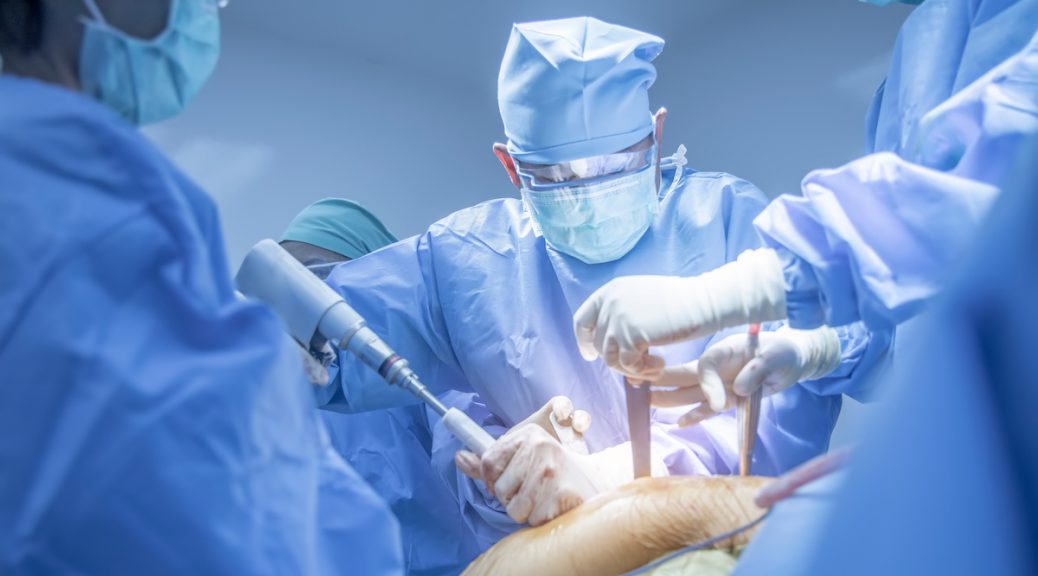Did you experience a slip or fall that has left you with a painful injury? Unintentional injuries account for 24.2 million emergency department visits each year. These include injuries ranging from strains, sprains, and dislocations to concussions and fractures, most of which affect the musculoskeletal system creating the most common orthopedic surgeries.
The musculoskeletal system includes the bones, cartilage, ligaments, tendons, joints, and bursae–the lubricated cushions between a bone and the surrounding soft tissue.
When possible, non-surgical treatment methods are always preferred. However, in many cases, surgery is necessary to correct these orthopedic injuries. If you encounter an orthopedic injury that requires surgery, work with a team you can trust. Paris Orthopedics is here to help by starting with sharing the most common orthopedic surgeries with you.
Partial Shoulder Replacement
Shoulder replacement surgeries are significantly less common than knee or hip replacements. While they may be performed to treat an injury such as a severely torn rotator cuff, shoulder replacement surgeries are often used to relieve painful conditions such as osteoarthritis. A partial shoulder replacement, or hemiarthroplasty, is a procedure during which the head of the humerus bone (long bone in the upper arm) is replaced with a prosthetic ball, but the natural socket is left intact.
Total Shoulder Replacement
In cases where the shoulder socket is affected, a total shoulder replacement is necessary. There are two different methods–traditional arthroplasty and reverse arthroplasty. In a traditional shoulder replacement surgery, the original ball-and-socket surfaces of the shoulder are replaced with similarly shaped prosthetics. During a reverse, the positions of the shoulder joint’s ball and socket are switched–the ball at the top of the upper arm bone (humerus) is replaced with a socket-shaped prosthetic, and the socket is replaced with a prosthetic ball.
Partial Hip Replacement
Partial hip replacement surgery is often performed to repair certain hip fractures. Like the shoulder, the hip comprises a ball and socket joint. With a partial replacement, the femoral head (or ball) is removed and replaced with either a ceramic or metal ball attached to a metal stem. The stem called a hip implant, is set into the femur. The socket is left intact.
Total Hip Replacement
The hip is one of the body’s largest joints, and hip replacement surgery is considered one of the most successful surgical procedures in all medicine. A total hip replacement includes replacing the femoral head (ball) and neck and removing any damaged cartilage in the pelvis. Three bearing surfaces are available for total hip replacements: a metal ball on the plastic liner, ceramic on ceramic, and metal on metal. Metal on highly cross-linked polyethylene (plastic) is the most recommended for durability. Around 98% of this type of replacement last around 20 years in young, active patients.
Total Knee Replacement
Knee pain is among the most common causes of chronic pain in the United States. Joint replacement surgery is often recommended for those unable to perform everyday tasks, such as sleeping, without difficulty and pain. It may also be used to correct a knee deformity.
The procedure name, total knee replacement, can be misleading. Many people may not realize that the bones themselves are not actually replaced but instead their surfaces in these surgeries. The bones (tibia and femur) are prepared by removing damaged cartilage from their surfaces and a small amount of underlying bone. Metal implants are then used to recreate the surface. The patella (kneecap) is also resurfaced before a medical-grade spacer is inserted between the metal components. This space creates a smooth gliding surface to restore joint function.
Contact Paris Orthopedics
Have you experienced an injury that can’t be healed without surgery? It may be time to find an orthopedic surgeon you can trust. Paris Orthopedic and Sports Medicine’s board-certified physicians offer patients comprehensive orthopedic and musculoskeletal services. Our services include surgical and non-surgical treatments for sports injuries and a broad range of bone, muscle, and joint problems. For more information, visit our website to schedule an appointment or give us a call at (903) 737-0000.



